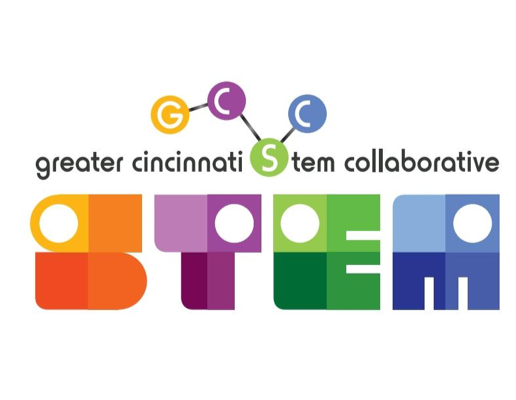
STEM Bicycle Club Offers Students STEM Experience & Much More
Getting a bike with a bow on it for a special holiday is, of course, magical for children; and the many organizations who do this are to be commended.
The Greater Cincinnati STEM Collaborative takes a different approach.
For the last 10 years, through its STEM Bicycle Club program, the Greater Cincinnati STEM Collaborative has been teaching children how to build bicycles, supplying them with needed parts and training.
At the end of the 10-week after-school STEM Bicycle Club, students leave with new bicycles, new knowledge about how to build and repair bikes, a meaningful experience with STEM and student wellbeing that can last a lifetime.
“It’s always nice to get a new bike for a kid who doesn’t have a bike. But to build your own bike has that much more of an impact on a young person,” said Sean Kelley, director of the Greater Cincinnati STEM Collaborative. “You understand when something goes wrong, you know how to fix it because it’s your bike. You built it and that’s what makes it special.”
The idea for the STEM Bicycle Club started with a group of engineers who were interested in bicycling and believed that the sport offered a unique and fun way to teach students about key STEM principles, including physics.
The STEM Bicycle Club started with an initial partnership among several companies and local community leaders. The founding group created a curriculum that is still being used today for the 10-week after-school program, tied to various English, math and science standards for fifth to ninth grade.
The program has grown from this single school to now 17 Bicycle Clubs operating throughout the region with each serving 15 students.
Emilee Armbruster, program manager for the Greater Cincinnati STEM Collaborative, said most students who participate in the bike clubs are middle schoolers, but noted that some elementary schools have even launched clubs.
Schools and other organizations apply to launch a Bicycle Club with the Greater Cincinnati STEM Collaborative and, once accepted, are given needed tools, resources and training for leading a Club.
Armbruster said the tools include bike stands, bike pumps and other items so that students can work on their bikes. Each of the 10 weeks of the program focused on a different bicycle system.
“One week might be the brakes, the next one would be the crank. They look at taking a tire on and off, replacing the wheels, putting your chain back on your bike, all that kind of stuff,” Armbruster said.
The students also respond to various reflection questions and have a workbook with extra resources and a curriculum that is regularly reviewed and updated by two classroom educators who test it on their own students before releasing it to the Bike Clubs.
“So while the students are building their bikes, they’re learning about different things like physics concepts,” Armbruster said.
When an organization applies to run a STEM Bicycle Club program, Armbruster said they can ask for different types support from the Greater Cincinnati STEM Collaborative, ranging from use of curriculum to financial support for purchasing bikes or tools.
“We provide leader stipends and training for any club leader since it is after school or they’re not paid for their time. We also pay for club food, which is up to $500 because we understand that students just had a very long school day. They probably eat lunch at around 11 or noon and now it’s 4 p.m. and they’re going to be hungry,” she said.
Volunteer mentors from the community also receive training and join the individual STEM Bicycle Clubs to work with the students.
The Greater Cincinnati STEM Collaborative also offers funding for any needed replacement tools as well as money to support the costs of transporting students to a culminating event, the STEM Bicycle Club Celebration held on the University of Cincinnati campus.
“It has a very backyard barbecue vibe in a very fun way. As long as the weather is good, it’s held outside on the lawn,” Armbruster said. “So all the bikes are lined up from school to school. And then we have different bike mentors or enthusiasts come by and they make sure everything is tight and good to go so students can ride without fear that a wheel is going to fall off or their seats are going to get turned or anything like that.”
Students are given a certificate, along with a helmet, a tire leveler and a lock.
But those are just the tangible takeaways. The intangible benefits are far deeper.
Armbruster and Kelley outlined some of the many benefits students realize as part of the STEM Bicycle Club:
- Teamwork – Students often work together to solve challenges.
- “One student will often help another student learn to ride a bike,” Armbruster said.
- Resilience and Perseverance – It’s not uncommon for things not to work quite right the first time, and students have to keep trying and then experience the satisfaction once things begin working.
- Confidence – The sense of accomplishment from building a bike that you then keep and own is deep and profound and documented by the Greater Cincinnati STEM Collaborative in anonymous exit surveys that are completed by each student.
- A student who participated in a Bike Club in middle school recently graduated from high school and was the school’s valedictorian and spoke about his Bike Club experience in his public remarks at graduation. Armbruster remembered the speech. “He talked about how when he started going to school, he was a transfer student. He found the STEM Bicycle Club. And he talked about how great of a club it was that got him excited to see his friends every day and that, like some of the skills he learned, like teamwork and communication.”
- Creativity – While there is a curriculum and instructions for how to build the bikes, there is also room to customize the process. In fact, some students are using 3-D printers to make various bike accessories.
- Career Exposure – Through the actual work of building the bicycles as well as the mentorship from area professionals, students who participate in the Bike Clubs gain deeper understandings of and interest in STEM that may fuel them to consider careers in the field.
- Leadership – It’s not uncommon for students who participate in the Bicycle Club one year to come back as leaders, assisting others, in future years.
- Armbruster shared the story of a Bicycle Club student, who began the program as very shy and reserved. Through her 10-week experience, that changed. “She was a student who went and did the club a year prior and then came back to volunteer at the club every week. Every week, she was helping the students get out their tools prior to the program. She was going up to students in the hallway and saying, ‘I actually think this program would really be great and you should apply to be in the Bike Club.’ She was kind of a force who made sure that students were getting involved and were excited about the club,” Armbruster said.
- When the bikes arrive, they are in a box and are not put together. For the first week, students learn to follow directions and put the bikes together, making adjustments for their own size or how they may want to ride.
- They learn about the braking system and how to loosen or tighten brakes and dive into the physics of these systems.
“Each club probably has about two students that have never ridden a bike before. Those students tend to keep their brakes a little tighter that way. When they go to break, the minute they touch down, it starts to react and they feel a lot more comfortable,” Armbruster said.
The STEM Bicycle Club is one of the signature STEM programs offered by the Greater Cincinnati STEM Collaborative, which serves more than 1,000 students each year from Cincinnati and surrounding communities.
